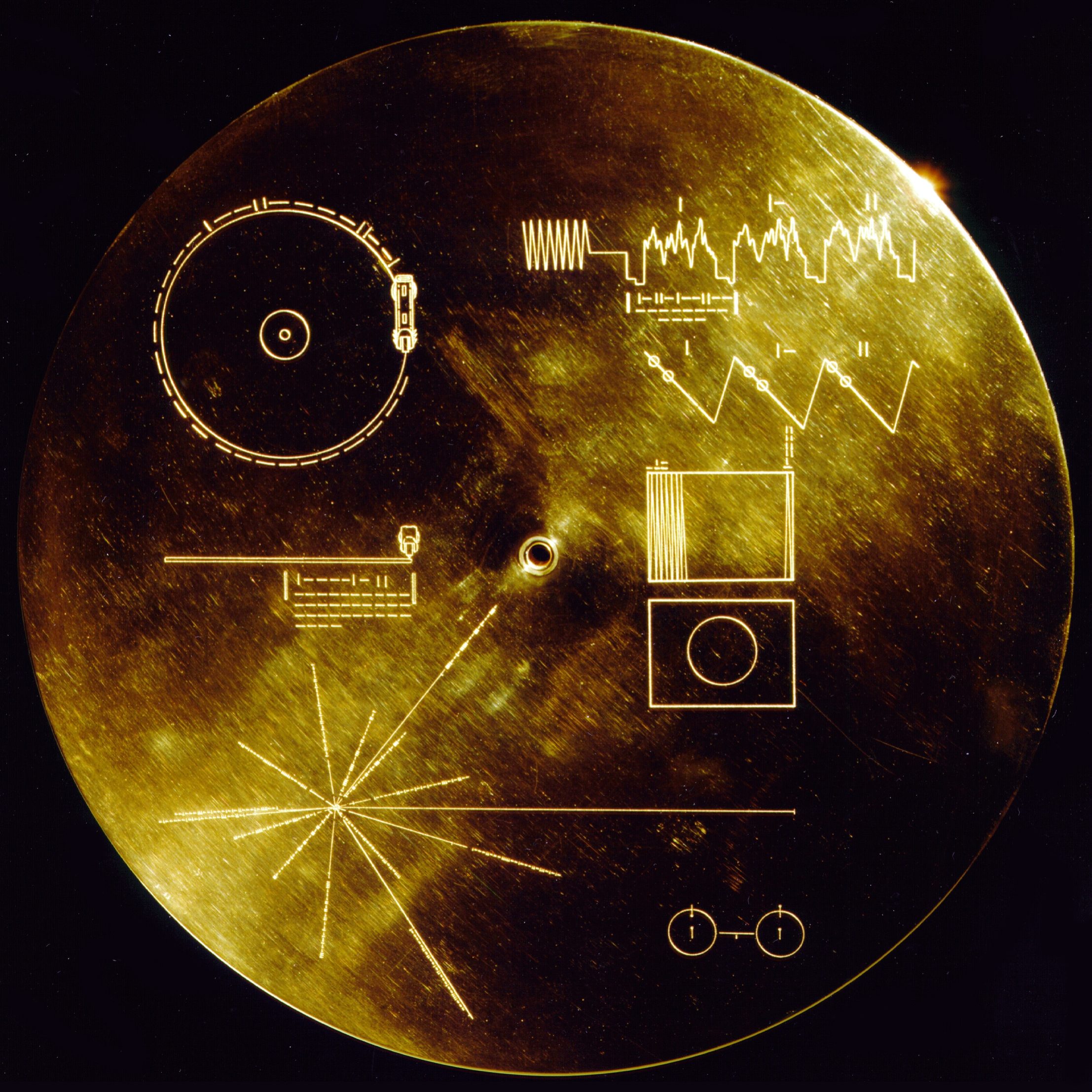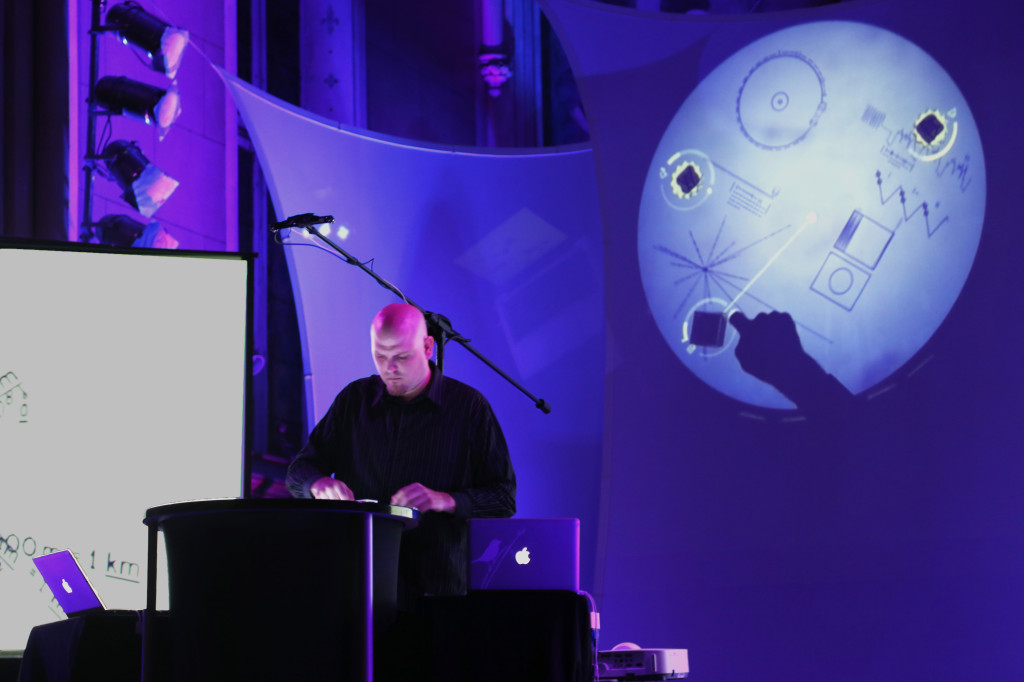Chamberfest Premieres the Voyager Golden Record Remix Project @ St. Brigid’s

“The aim and final end of all music should be none other than the glory of God and the refreshment of the soul.” — Johann Sebastian Bach
Before we can get to the show we have to set the stage. If “Sounds from Space” were a play, the Playwright would be humanity — the National Aeronautics and Space Administration (NASA) and former US President Jimmy Carter could snag Producer titles — Carl Sagan and his committee would be the integral Theatre Consultants — Roman Borys (artistic director of the Chamberfest) would be Dramaturge — Colin Power, the fastidious videographer, would be Scenic Designer — and Jesse Stewart would be Artistic Director, Master Electrician, Sound Designer & Stagehand.
It’s complex but in a nutshell it’s a science fiction remix. The Voyager Golden Record Remix Project premiered at Saint Brigid’s Centre for the Arts last Friday as part of Chamberfest.
The Project uses close to half the golden record’s 31 recordings. Jesse’s original plan was to use more than 10 turntables to spin wax simultaneously. He had thought it out back when samples couldn’t be found by the click of a mouse. You had to scour vinyl bins in music stores, with a scribbled list from an encyclopedia or perhaps a NASA press release you found in a library. This was before the Internet, before digital synthesizers like the Reactable.
With this instrument, Jesse acted out the Plot: An alien has found a Voyager probe and deciphered the golden disc to make sounds! It is confronted with a salutation of human civilization and, without any context, will understand this to be a snapshot of our “culture.” A valiant effort undertaken by Carl Sagan and his counterparts at NASA, who definitely dug chamber. So what would the saucerman do with this “culture?” Would he make it his own? Would he sample it with his Reactable? Because we have to believe this spaceman has the counter-high, circular instrument from Spain that Jesse has. It’s an illuminated table with blocks called Tangibles that play sound generators, sequencers, oscillators & a large number of effects. The sound is made visible as electrical bolts all linked to the centre dot, which pulses with tempo. In the background, the golden record’s coded side spun lazily in a hazy blue.
The actual gold-plated, copper records attached to the side of interstellar spacecraft contain three pieces by Johann Sebastian Bach, Mozart’s The Magic Flute, Stravinsky’s The Rite of Spring, as well as Beethoven’s First movement of his Fifth and his “String Quartet No. 13.” The only piece of music I could actively identify through the sampling was “Johnny B. Goode” by Chuck Berry. Then there are tons of flutes, chanting by Australian, Indian & Navajo peoples, a Pygmy girl’s initiation song from Zaire, “La Castabel” by Mexican guitarist Lorenzo Barcelata, and other folk songs from countries like Azerbaijan, Bulgaria, Georgia, and Papua New Guinea. And what would a mixtape from the 70s be without the melancholic Louis Armstrong?

Four tracks of the record’s 31 are human greeting and bio-diverse noises ranging from volcanoes to dogs. Also, the sounds of industry: horns braying, machines clanking, saws sawing & planes flying. These sounds overlapped and crashed into each other as Jesse spun his extraterrestrial tale on his Terran synth. On five screens you could see the images of earth (also included on the golden discs) shifting and melting as the Reactable throbbed with the voices of the children of Earth with greetings in numerous languages. The middle screen captured Jesse’s pate, directly above the Reactable and its Tangibles, flanked by two MacBook Pros. All in black, Jesse Stewart was Conductor to the performance’s Orchestra.
Only about 80 sound samples were used that night, just a glimpse of the little green man out there banging on our drum. And still it would have been overwhelming without the visuals: spermatozoa impregnated an egg, bridges stretched and trees grew, people ignored or smiled at the camera, and a range of animals posed in their natural habitat, once with the outline of a hunter over the crest. It made me wonder what a saucerman would actually think of these images, or Beethoven’s aggressive joint, or the voice of Legion saying “hiya.” At Jesse’s finicky fingers we were immersed into a cloud of reverb & echo of that creativity. Ever the percussionist, his head started to bob as Chuck Berry started riffing. The hour slid by for the Fringe crowd — the common patron of OICMF had been in bed hours ago.
Jesse’s remix was a quiet tip of the hat to all the people who made the golden records possible, from the earliest aboriginals songwriters, to the makers who engineered the technology, to classical composers & avid interviewers, and to great thinkers who figured out how to say hi to the unknown. When the curtain fell, the silence that reigned was of stunned awe, like the airlessness of space. Then we remembered where we were and who we were and we applauded.
